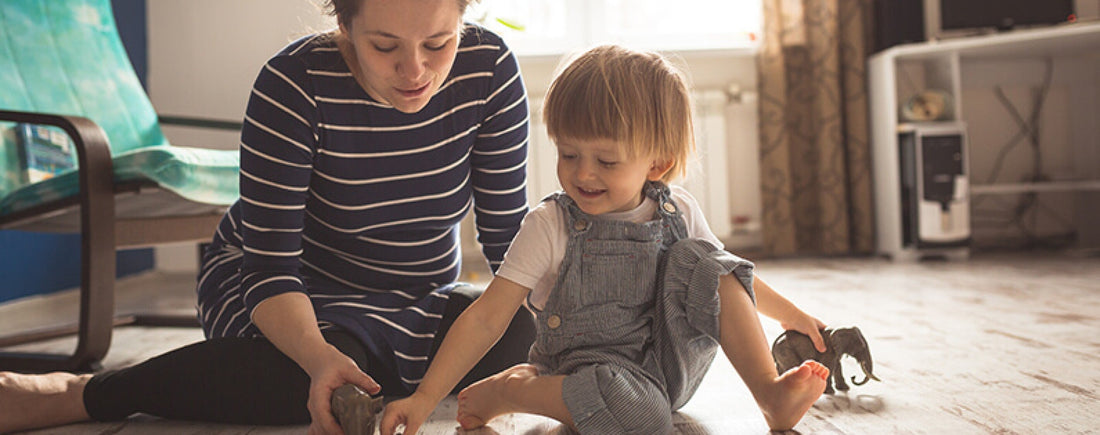Millions of parents across the globe have become overnight homeschool teachers and remote workers. Daily schedules have been upended, routines disrupted, and helpful habits suspended in the face of this unprecedented global health crisis. Here are 10 practical ways to integrate educational opportunities, physical activity, family time, relaxation, and service into the days ahead.
Crafting a theme for each day of the week is one creative way to use documentaries as part of a larger education process. Explore health on Monday, history on Tuesday, the environment on Wednesday, positive psychology on Thursday, and personal transformation on Friday. If your child is up for the task, have them write an age-appropriate summary at the conclusion of each documentary. Keep the summaries in a binder so that they show their teachers all that they learned during their homeschooling adventure.
Though the current global upheaval comes with many unexpected challenges, it does have a silver lining: connected and dedicated time with your children. Every day challenge yourself to enjoy it, make the most of it and do more than just get through it. We are all going to come out on the other side. The question is, will you be present during the process?
Learn Deepak Chopra's simple, often surprising ways to feel less stressed and more energetic each day with our self-paced online course, Secrets to Vibrant Health. Learn More.
Find balance anywhere, anytime with the new Chopra App. Download it now for hundreds of personalized guided meditations at your fingertips.
*Editor’s Note: The information in this article is intended for your educational use only and is not a substitute for professional medical advice, diagnosis, or treatment. Always seek the advice of your physician or other qualified health providers with any questions you may have regarding a medical condition and before undertaking any diet, supplement, fitness, or other health programs.
1. Use Chalk to Write Positive Messages
COVID-19 is not only a health crisis but an economic one too. Many people have lost jobs, had work hours reduced, or closed the doors on their businesses. While your child cannot change the economy, they can remind their neighbors that there is still love, light, joy, and laughter to be experienced. Let your child know that they are never too young to make a difference. By writing positive messages and creating uplifting artwork on the sidewalk or driveway they can encourage neighbors to lighten their mood and brighten their perspective.2. Visit an Online Museum
Some of the world’s best museums are now offering online tours! From London to Paris to Washington D.C., you and your child can take a virtual vacation. Extra credit is available for parents who are able to subtly weave in a little history lesson. Museums provide a launching point for conversations ranging from war and art to fashion. What interests your child? As part of a broader curriculum, you can also virtually explore the city that houses a museum of interest.3. Watch a Documentary
Few stories are as inspirational as true ones; there is such value and insight available from documentaries. Rather than scrolling through Netflix to find the next source of entertainment for your child, why not allow the platform to become a teacher? Documentary filmmakers do an excellent job of exploring topics as diverse as culture, health, the environment, and achievement.Crafting a theme for each day of the week is one creative way to use documentaries as part of a larger education process. Explore health on Monday, history on Tuesday, the environment on Wednesday, positive psychology on Thursday, and personal transformation on Friday. If your child is up for the task, have them write an age-appropriate summary at the conclusion of each documentary. Keep the summaries in a binder so that they show their teachers all that they learned during their homeschooling adventure.
4. Let Their Passions Guide You
The hectic family schedules of pre-pandemic days hardly allowed space for novel, nonessential explorations. Yet, there is no better time than the present for your child to dive into their interests—whether they be in music, language, writing, calligraphy, science, dance, or art. With much of the world going virtual practically overnight, there is no limit to what your child can explore. Music teachers are offering live virtual lessons, language learning platforms have expanded to offer free games and apps, and many educational companies are providing free services to impacted children. Is it possible that school closures offer an opportunity to redirect the focus of learning to something new, and likely more interesting, to your child?5. Clean Out a Closet
Spring cleaning begins now! Sorting through outgrown clothes, broken toys, and puzzles with missing pieces may not be the epitome of fun but it is liberating! Choose one drawer, cabinet, or closet to declutter each day. Pull everything out and then make piles for donation, trash, and E-bay/Craigslist. Organize what is left and put it back into your space. Over the course of the next few weeks, you might just find that the order to “shelter in place” has created peace in your space.6. Make a Care Package for the Grandparents or Elderly
Throughout the world, individuals over the age of 65 have been instructed to stay inside to protect themselves from COVID-19. This guideline might create more than social distance between the older population and the rest of society; it may fuel loneliness and a sense of isolation. To maintain a connection with the older population, help children reach out to grandparents or seniors in the community through letters, cards, and artistic creations. (Don’t worry, by the time the letters reach the grandparents any potential COVID-19 germs will be past the transmissible stage.) These acts of care and kindness can make the difference between a grandparent who feels lonely and forgotten and one who knows that they are loved.7. Plant a Garden (or indoor plants)
This is a great time of year to repot houseplants and begin prepping your spring garden. Have your child help you in upgrading your houseplant’s living conditions. Then, if the weather allows, head outside to clear weeds, rocks, and debris from your garden area. Till the soil and plant some fruits or vegetables.8. Escape with a Book Series
Oscar Wilde once said, “It is what you read when you don’t have to that determines what you will be when you can’t help it.” A shelter in place order is an amazing opportunity to engage your child in reading. Perhaps your child already loves to read, in which case, order them the latest book series. If your child doesn’t love to read, it’s time to put on your best actor’s voice and read to them. That’s right, read an entire novel, or several, to your child. Reserve time each day to snuggle on the couch, sip a cup of cocoa, and settle into a good book. Your child may well discover that a good book far surpasses even the best movie!9. Take an Adventure Walk (Dice Included!)
Put on some tennis shoes, grab a set of dice, and hit the street. Each time you come to a corner, roll the dice. Add, multiply, subtract, or divide the two numbers. If the answer is odd, turn left. If the answer is even, turn right. Set a timer and see where you end up in half an hour. This activity addresses education, physical activity, and family time components in one fell swoop.10. Warm Bread Anyone?
Who has time to bake bread? Well, currently, your child does. What a great time to try a brand new recipe, preferably one that takes some time to make. Choose something that has to soak, rise, or simmer and put your child in charge of timing, checking, and reporting back to you. Connecting over making a delicious new bread may give your child a sense of purpose—and may give you a little breathing room.Though the current global upheaval comes with many unexpected challenges, it does have a silver lining: connected and dedicated time with your children. Every day challenge yourself to enjoy it, make the most of it and do more than just get through it. We are all going to come out on the other side. The question is, will you be present during the process?
Learn Deepak Chopra's simple, often surprising ways to feel less stressed and more energetic each day with our self-paced online course, Secrets to Vibrant Health. Learn More.
Find balance anywhere, anytime with the new Chopra App. Download it now for hundreds of personalized guided meditations at your fingertips.
*Editor’s Note: The information in this article is intended for your educational use only and is not a substitute for professional medical advice, diagnosis, or treatment. Always seek the advice of your physician or other qualified health providers with any questions you may have regarding a medical condition and before undertaking any diet, supplement, fitness, or other health programs.






















